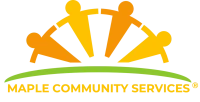Your questions on Cerebral Palsy diagnosis answered
Cerebral palsy is a neurological condition caused by brain abnormalities or injuries to a baby during pregnancy or birth. Understanding the diagnosis process is crucial for early intervention, which plays a significant role in managing CP.
A cerebral palsy diagnosis typically occurs in early childhood with noticeable symptoms including developmental delays, abnormal muscle tone, and coordination challenges. A diagnosis involves developmental assessments, neurological evaluations, and brain imaging like MRI and early signs like motor milestone delays or asymmetric movements may prompt an in depth medical consultation.
This condition touches the lives of many families around the world and presents unique challenges and questions for those affected. At Maple, our aim is to connect you to all of the resources and services that can help you to navigate this life altering scenario and guide you through the nuances of NDIS cerebral palsy diagnosis and funding.
Are you or a loved one eligible for NDIS funding?
What are 3 early signs of cerebral palsy?
The signs and symptoms of cerebral palsy can vary in severity and they may not be immediately apparent. However, if you do notice any of these signs in your child, then early intervention can be crucial as this can lead to a more detailed assessment and early diagnosis and treatment.
Three early signs of cerebral palsy in infants and young children include:
Delays in motor milestones
This is often one of the first signs parents or caregivers may notice. Children with cerebral palsy often experience delays in reaching motor skills milestones such as holding their head up, sitting without support, rolling over, crawling or walking.
Abnormal muscle tone and reflexes
Infants showing signs of cerebral palsy may exhibit either usually stiff (hypertonic) or floppy (hypotonic) muscles. As your little one grows, their muscle tone may change, often becoming spastic. Additionally, their reflexes might be exaggerated or abnormal, such as a persistent Moro reflex (startle reflex) beyond the age where it typically disappears.
Unusual posture or favouring one side of the body
Babies with cerebral palsy might display unusual postures due to muscle stiffness. They may also consistently favour one side of their body. For example, they might tend to use one hand to reach for things while keeping the other hand in a fist, or they may have a tendency to drag one leg while crawling.
How do they diagnose cerebral palsy?
Diagnosing cerebral palsy typically involves a multifaceted approach, as there is no single test that definitively determines the condition. Early signs may appear in your child’s first few months of age, however, a definitive diagnosis can take time. Your doctor will observe your child's development closely and may even carry out necessary testing over a period of a few years as developmental delays and motor deficiencies become more apparent as they grow.
The process of a cerebral palsy diagnosis often includes the following steps:
- Developmental monitoring which is also known as surveillance involves consistently tracking a child’s growth and development from a young age. As a parent or a caregiver, you may initially notice delays in reaching movement milestones such as sitting, crawling or walking. Your GP can help you to monitor these developmental milestones.
- Developmental screening will be carried out by your doctor if developmental delays are suspected during the monitoring period. At this point, your child undergoes a more formal evaluation involving a series of standardised tests that assess specific aspects of your child’s development, such as motor skills, speech and behaviour.
- A medical history review of prenatal and birth history, early infantile illnesses, and any other relevant medical events is crucial for your medical team to understand the potential origin of a condition. Factors such as premature birth, low birth weight, or complications during birth are all considered to determine a diagnosis.
- A physical examination is then conducted by your doctor to assess your child’s muscle tone, reflexes ,coordination, and motor skills. Specific signs such as muscle spasticity, poor coordination, and delayed development are all indicators of CP.
- A neurological evaluation then focuses on your child’s brain and nervous system functions. It also helps to rule out other disorders that may present similar symptoms.
- Brain imaging techniques such as Magnetic Resonance Imaging, also known as an MRI or a Computed Tomography, known as a CT scan, are used to understand any abnormalities that might appear in the structure of the brain.

At what age can CP be diagnosed?
Cerebral palsy can be diagnosed in children of varying ages, depending on the severity of the symptoms. A cerebral palsy diagnosis age is typically during infancy or preschool years with most cases being diagnosed by the time a child reaches 2 years of age.
A cerebral palsy infant diagnosis can occur as early as a few months old. Signs such as significant developmental delays, abnormal muscle tone, and atypical motor movements can prompt an early diagnosis.
A cerebral palsy diagnosis during pregnancy is not likely, however certain risk factors may be identified. Prenatal factors such as infections, birth complications, or premature birth increase the risk of a child developing CP and can initiate close monitoring from your GP in the early months of your child’s life.
Can you be diagnosed with cerebral palsy later in life?
Cerebral palsy is caused by damage to the brain in the very early stages of life such as before, during or shortly after birth. The majority of diagnosed cerebral palsy cases are discovered in the very early years of a child’s life, the symptoms and signs of CP are usually noticeable and quite apparent at this time. However, instances of a later diagnosis have been known to occur. It is usually because the symptoms were either very mild or misattributed to another condition.
Any brain injury that occurs after the age of 5 years old is not considered as cerebral palsy. CP is considered a spectrum condition with varying levels of severity. If you receive a cerebral palsy diagnosis as an adult, it doesn’t mean that you have developed it. Rather you may have been living with the symptoms for some time and only now being diagnosed correctly.
If you or your child are navigating a recent cerebral palsy diagnosis, we want to help you. Our team of professionals have significant experience facilitating NDIS plans for cerebral palsy and implementing the services necessary for a better quality of life for our clients.
How much funding can you get from NDIS?
Learn more about Cerebral Palsy NDIS Diagnosis

The Maple Commitment
Enquire Today
Whether its a query about the services we provide, or just a general enquiry, we would love to hear from you!

